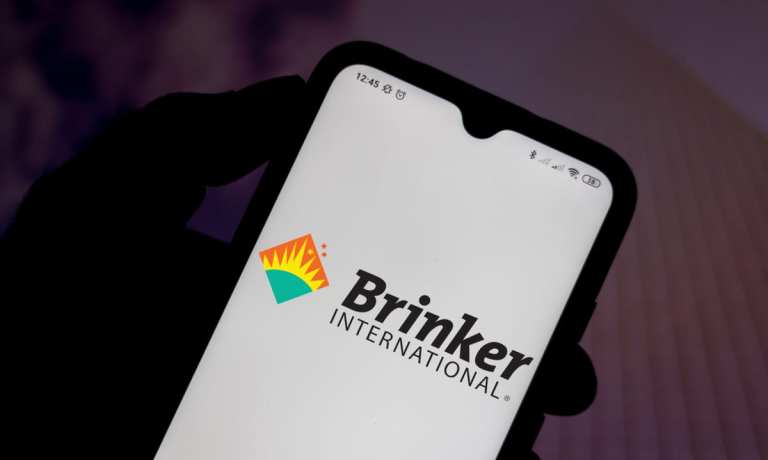Dine-In Restaurant Stocks Rally On Vaccine News, But Food Aggregators And Pizza Chains Sink

News on Monday (Nov. 9) that Pfizer’s experimental COVID-19 vaccine has delivered a preliminary 90 percent success rate sent consumers’ hopes soaring, fueling a rally in stocks of dine-in restaurants and other companies linked to how we used to live.
For instance, shares of Brinker International, which operates or franchises about 1,600 Chili’s Grill and Bar locations and other eateries, were up 15 percent as of midday Monday. That caps a six-month, 135 percent bounce for the 45-year-old Dallas-based chain.
Meanwhile, Darden Restaurants – parent of the Olive Garden and Longhorn Steakhouse chains – rallied 18 percent as of midday.
The vaccine-driven rally in dine-in restaurants was widespread, as shares of Texas Roadhouse, Ruth’s Chris Hospitality Group, Cracker Barrel, Cheesecake Factory, Denny’s and Dave & Buster’s also rose by 15 to 35 percent on the day.
Even ahead of the vaccine news, many long-standing casual-dining stocks had already been rallying on speculation that the hard-hit sector was set to undergo a phase of consolidation and acquisitions.
However, the “back-to-normal” rally that the markets saw on Monday represents much more of a pure-play on earnings and recovery.
Stocks Slump for Pizza Chains and Food Aggregators
As hot as the dine-in theme was on Monday, restaurants that have benefited from a surge in takeout and delivery business – such as pizza chains – struggled on the news. It appears that their near-monopolies on takeout food could soon dissipate.
Shares of Domino’s Pizza, which operates 17,000 stores, and Papa John’s International, which has about 5,500 pizza shops, were both down about 5.5 percent at midday.
The prospect of a vaccine also put the food delivery companies under pressure. Grubhub, which has delivery arrangements with over 300,000 restaurants, fell 10 percent on the news. And Just Eat Takeaway, which is in the process of buying Grubhub, was down 8 percent in afternoon trading.
QSRs and Drive-Thrus
Shares of quick-serve restaurants were sitting in the middle of Wall Street’s action, not doing as well as sit-down chains or as poorly as food aggregators.
That’s not surprising, given QSRs’ experience during the pandemic. On the plus side, almost all of them had substantial drive-thru and takeout operations in place before the pandemic hit. But on the downside, their eat-in businesses have suffered.
The leading QSR brands were mostly higher on the day, but rose more consistently with the broader market’s rally. For example, Yum! Brands – parent of Pizza Hut, Taco Bell and Kentucky Fried Chicken – saw its stock jump 5 percent. Wendy’s likewise rose 2 percent, but shares of McDonald’s were down about half a percent.
PYMNTS Data Bank Up Investors’ Sentiments
Such a divergent market reaction jibes with PYMNTS’ consumer research. According to that data, 88 percent of consumers surveyed in September said they were eating less at table-service restaurants than they did before COVID-19. That’s been consistent since U.S. lockdowns began in March.
Even worse for sit-down restaurants, the number of consumers who are dining out less often rose to 90 percent for those who said they were “very or extremely concerned” about the virus.
But by comparison, only 50 percent of consumers surveyed said their QSR dining was currently lower than before the pandemic. That’s a noticeable improvement since March, when 72 percent of consumers surveyed reported eating less often at QSRs.
It’s Not Over Until It’s Over
Certainly, the finalization of a COVID-19 vaccine will have huge global economic implications. But in the short term, analysts say the restaurant industry is still facing some pretty serious headwinds.
Notable among these are the recent sharp increase in positive COVID-19 cases, the threat of renewed lockdowns and the coming of winter’s effect on outdoor dining.
JJ Kinahan, chief market strategist at TD Ameritrade, said that with such potential hits still facing the U.S. economy and job market, “it will be very interesting to see how that plays out. Many restaurants, for instance, are going to have trouble keeping employees on payrolls as some states ban indoor dining and winter makes outdoor dining a challenge in places like Illinois [and other cold-weather places].”
For example, New Jersey Gov. Phil Murphy announced that as of Thursday, the Garden State will ban indoor dining between 10 p.m. and 5 a.m. at all restaurants, bars, clubs and lounges. New Jersey’s casinos will also stop serving food and drinks at 10 p.m., and all barside seating will be prohibited.
Murphy also said that tables closer than six feet apart would have to be separated by barriers, although individual, fully enclosed outdoor dining bubbles would still be allowed.
“The last thing I want to do is shut our economy back down,” Murphy wrote in his official Twitter account. “We’re taking steps today to mitigate the current increasing rate of spread. We must shake off pandemic fatigue and get back into the mindset that saw us crush the curve this spring.”